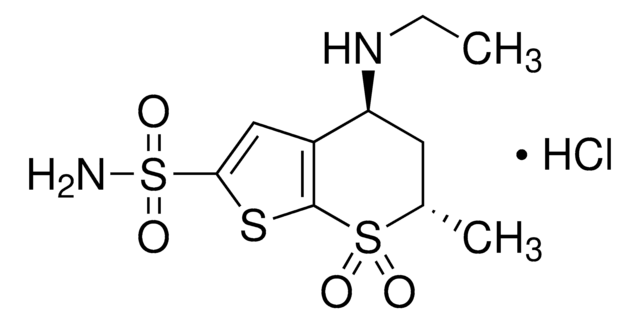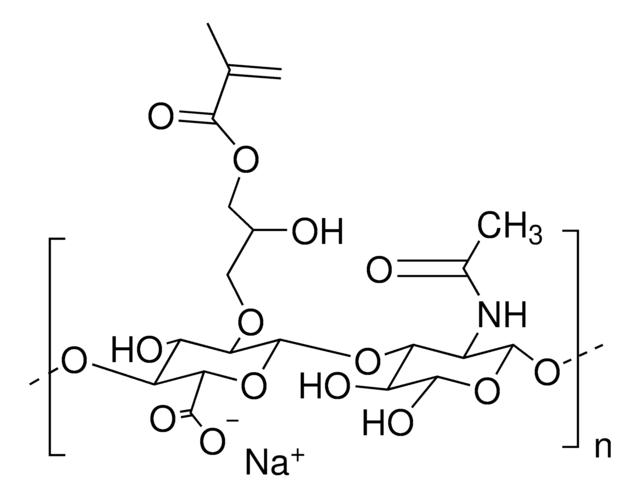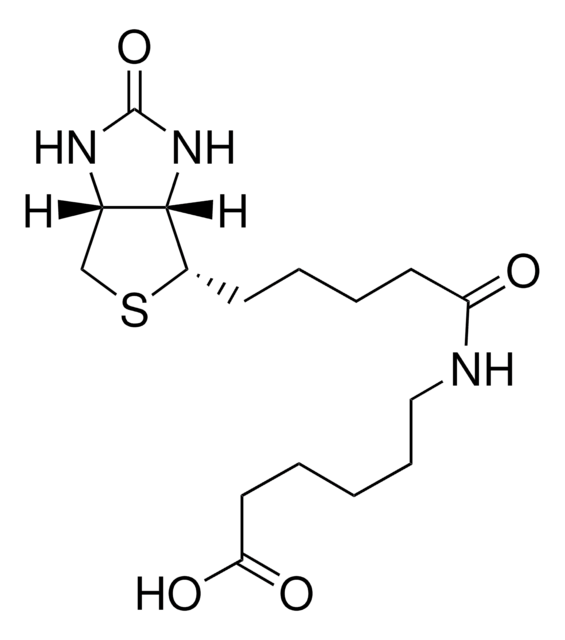B1557
Hyaluronan biotin sodium salt
≥97%, soluble powder
Synonym(s):
Hyaluronic acid biotin
Select a Size
Select a Size
About This Item
Recommended Products
Quality Level
Assay
≥97%
form
soluble powder
mol wt
≥700 kDa
loss
≤5% loss on drying
color
white to tan
storage temp.
2-8°C
1 of 4
This Item | 924490 | 914568 | 14407 |
|---|---|---|---|
| assay ≥97% | assay - | assay - | assay ≥97.0% (HPLC) |
| Quality Level 100 | Quality Level 100 | Quality Level 100 | Quality Level 100 |
| form soluble powder | form (Solid chunks, fibers or powder) | form powder or chunks (or fibers) | form powder |
| storage temp. 2-8°C | storage temp. 2-8°C | storage temp. 2-8°C | storage temp. - |
| color white to tan | color white to pale yellow | color white to off-white | color colorless to white |
| mol wt ≥700 kDa | mol wt - | mol wt average Mw 55000 | mol wt - |
Application
Other Notes
Storage Class Code
11 - Combustible Solids
WGK
WGK 3
Flash Point(F)
Not applicable
Flash Point(C)
Not applicable
Personal Protective Equipment
Choose from one of the most recent versions:
Already Own This Product?
Find documentation for the products that you have recently purchased in the Document Library.
Related Content
Learn about C6H10O6 or dextran formation, classes and naming from MilliporeSigma. Dextrans are polysaccharides with molecular weights ≥1,000 Dalton, which have a linear backbone of α-linked d-glucopyranosyl repeating units.
Our team of scientists has experience in all areas of research including Life Science, Material Science, Chemical Synthesis, Chromatography, Analytical and many others.
Contact Technical Service







